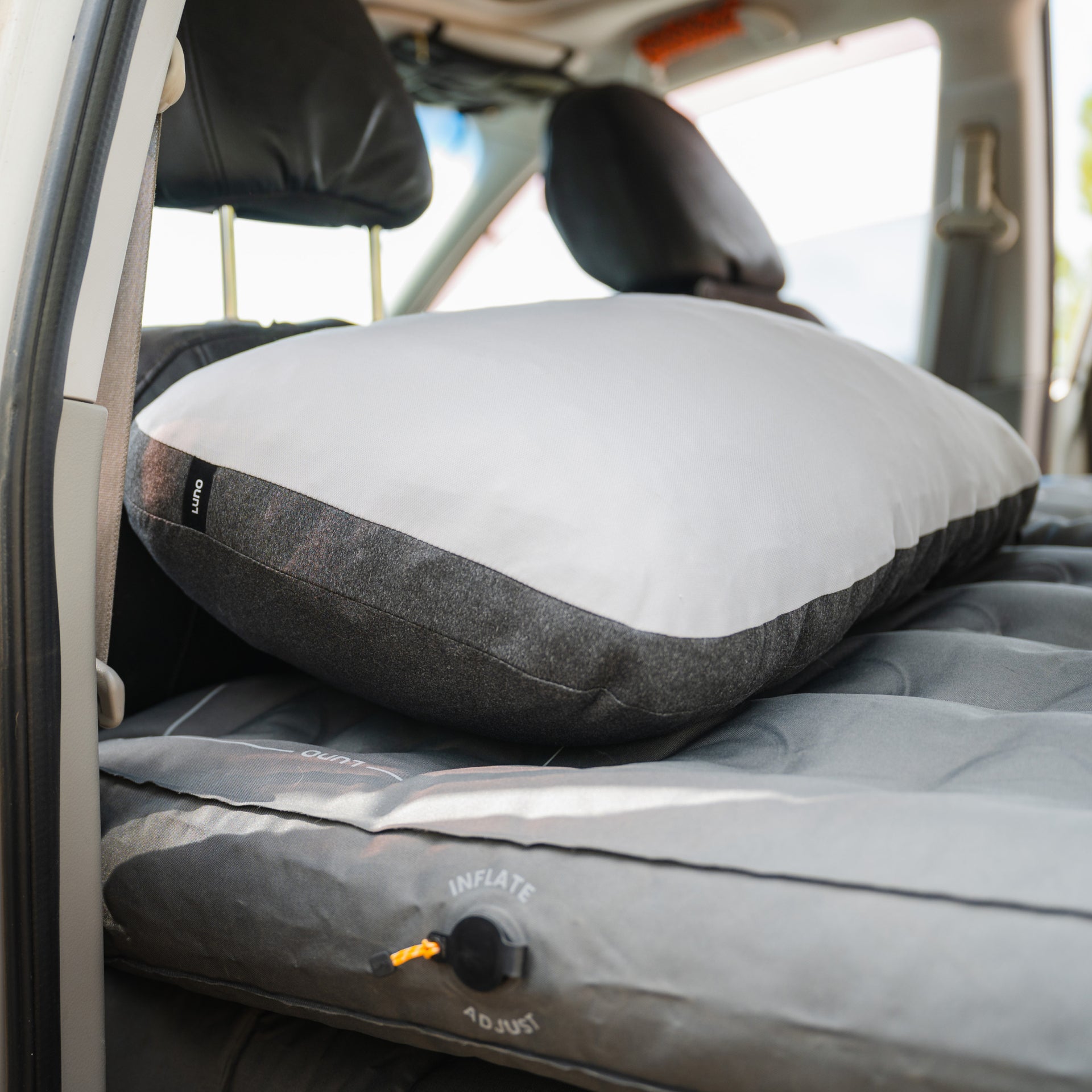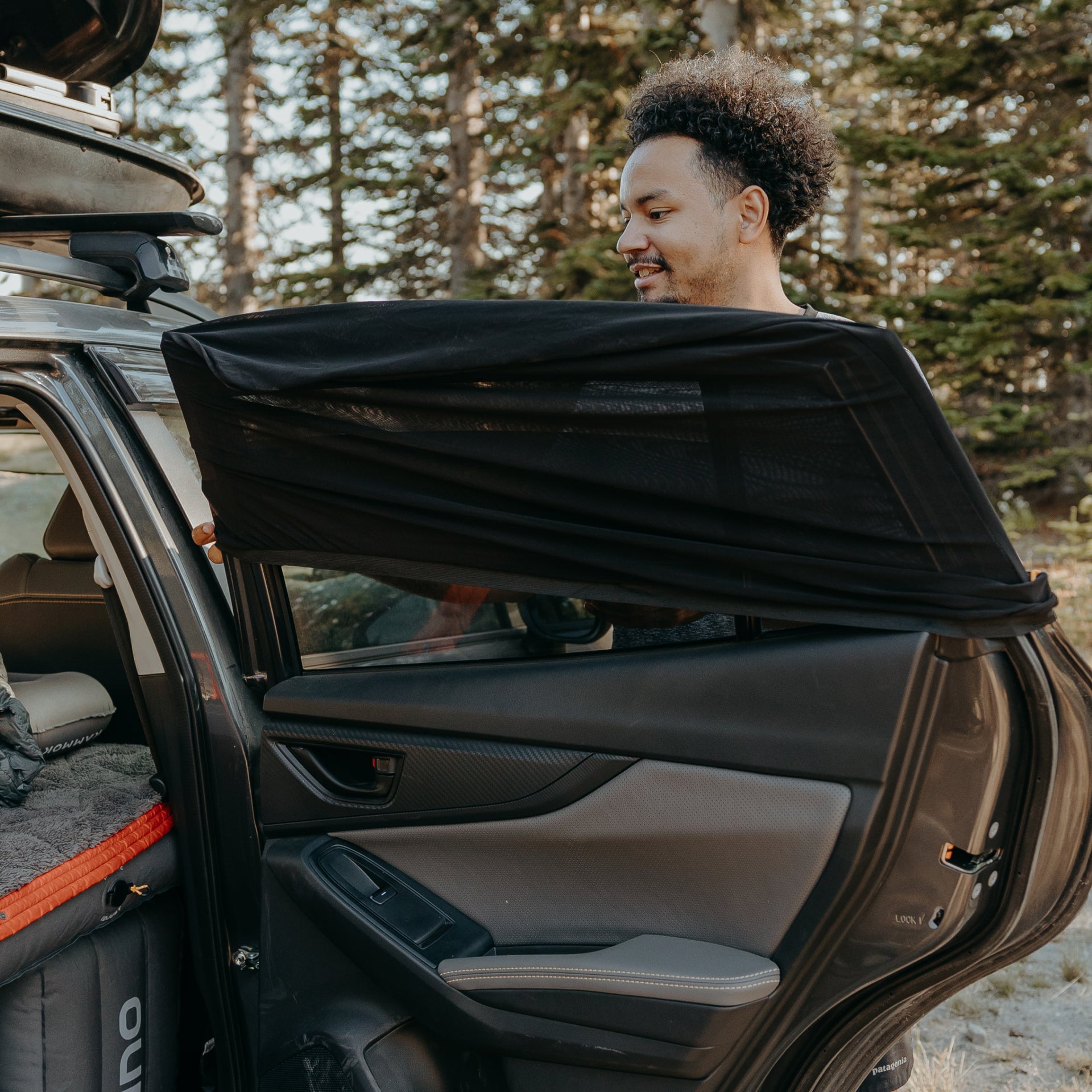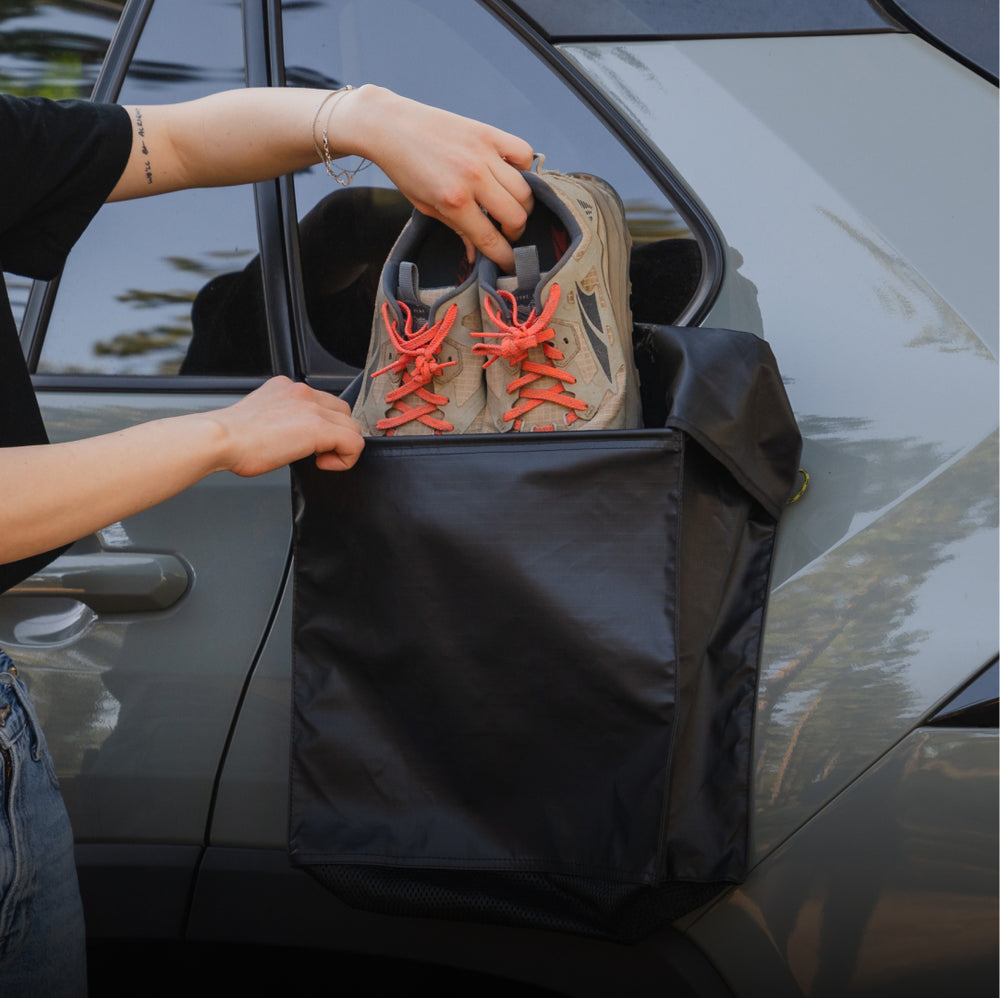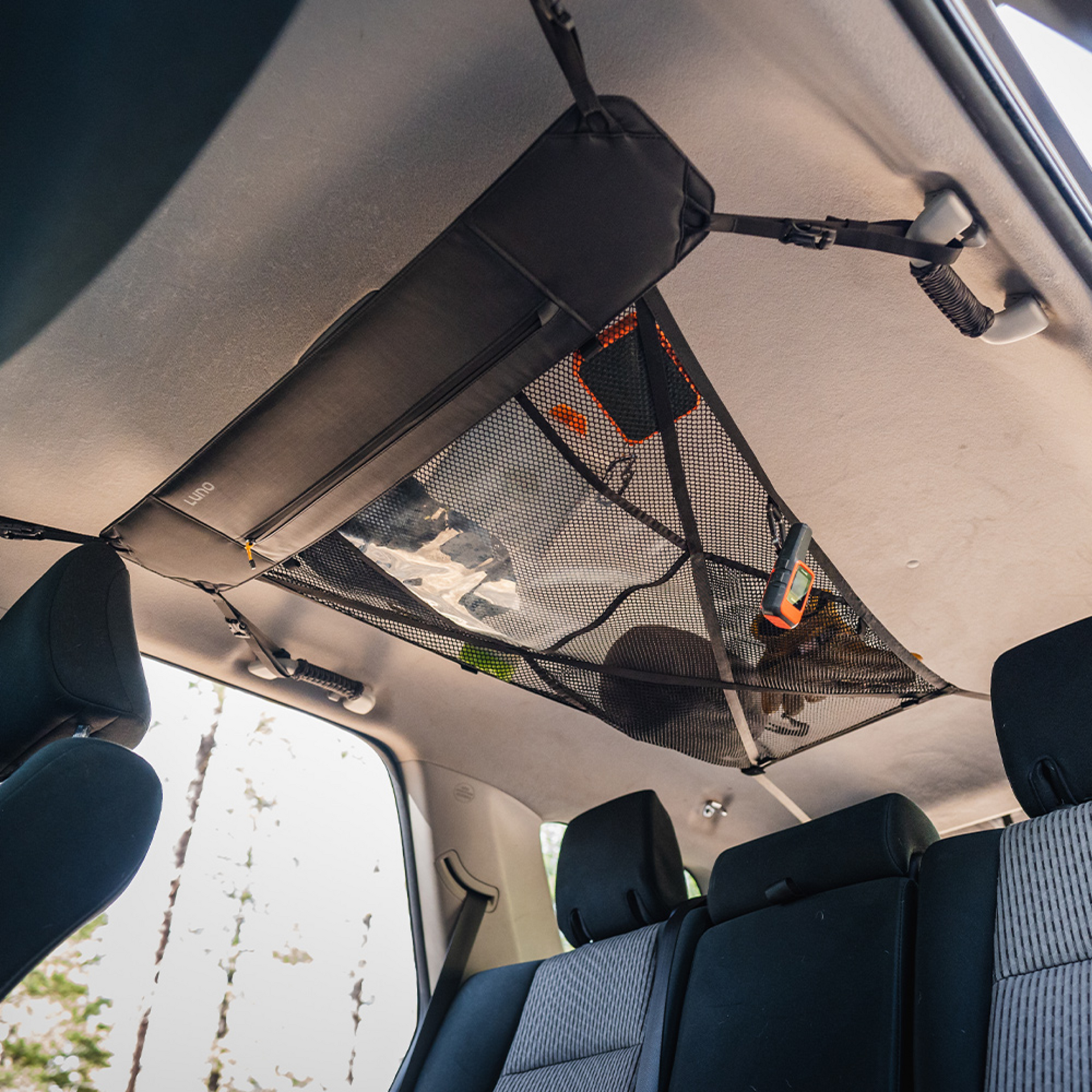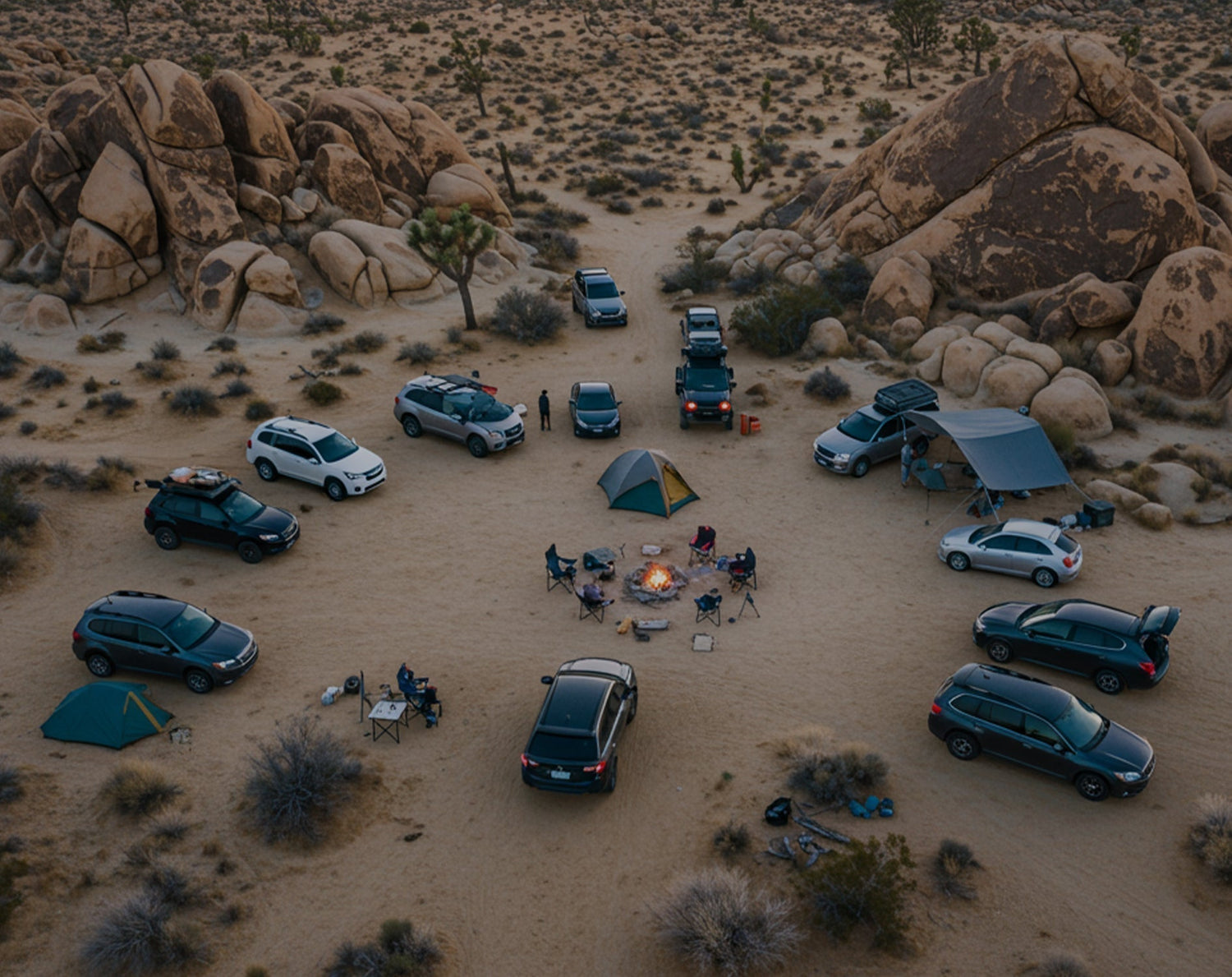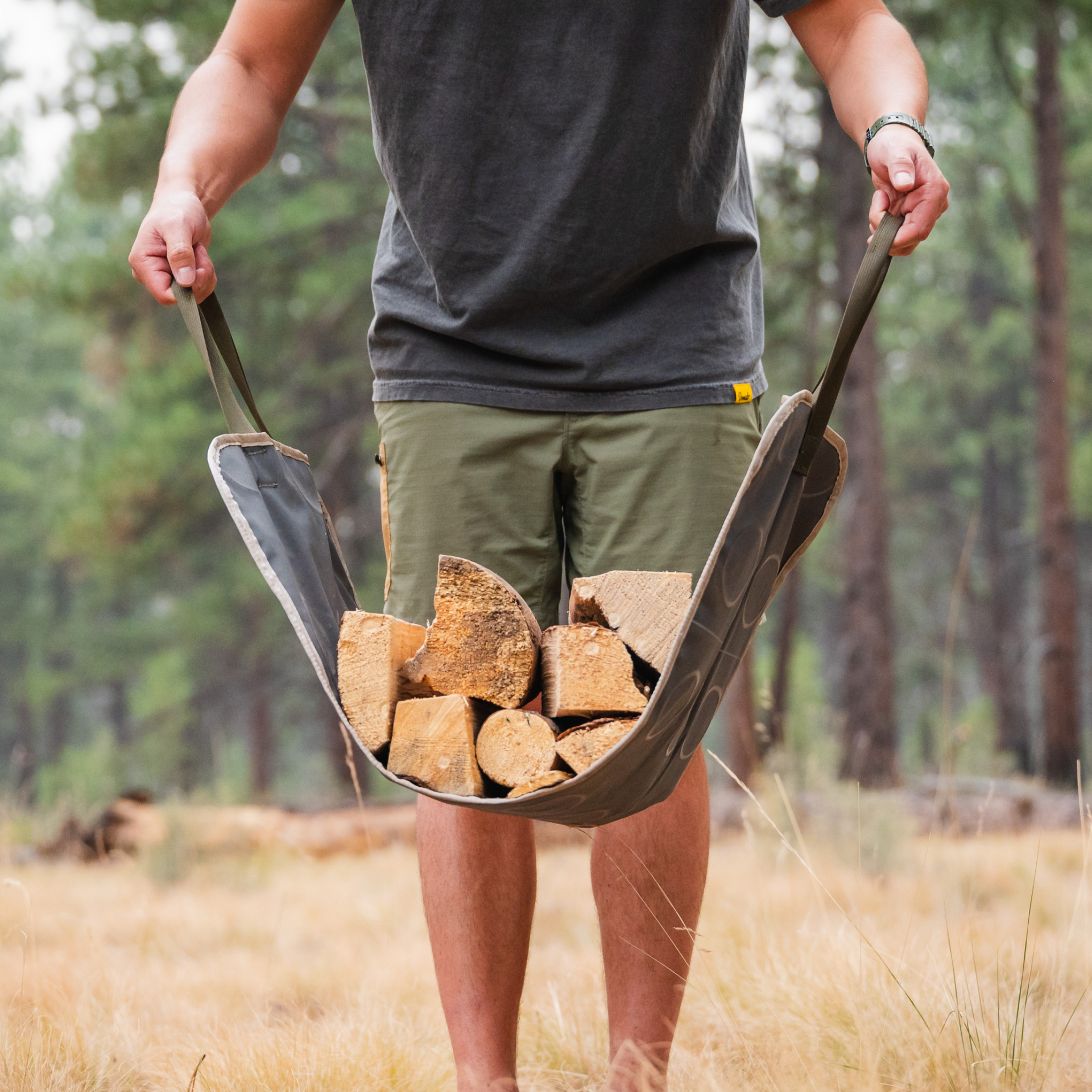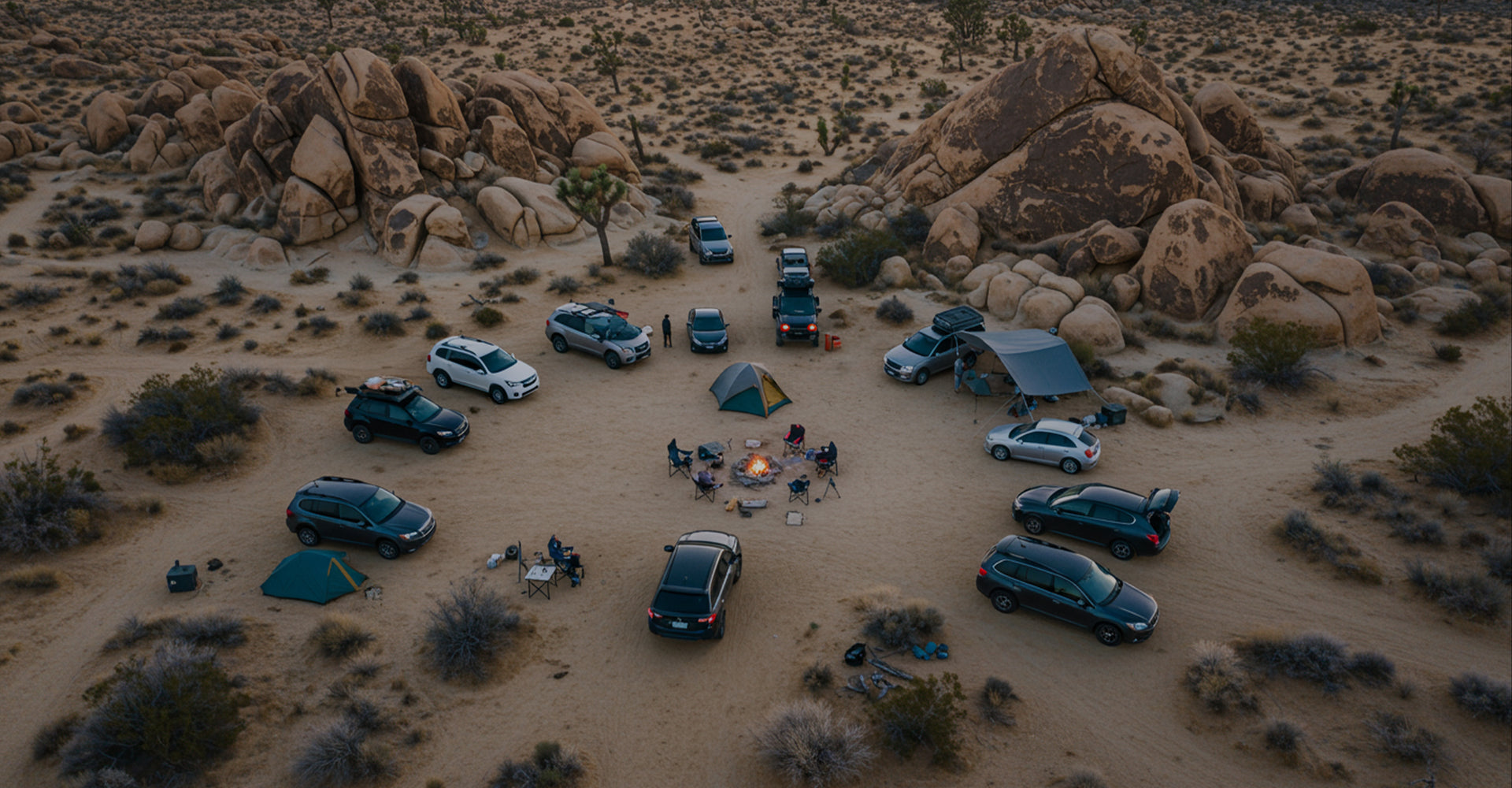
A Complete Guide To Camping In National Parks
Our national parks are a national treasure (shout-out Nicolas Cage—we appreciate you protecting our Constitution from bad guys). All jokes aside, thanks to the hard-working National Park Service, our most magnificent wild places are conserved for current and future generations to enjoy. And the best way to enjoy these stunning public lands, in our humble opinion, is on a camping trip.
Simply put, camping in national parks puts you at the heart of the action. Instead of commuting from afar, you can start your day at the foot of mighty peaks or sip your morning coffee while gazing out at a spectacular desert vista. If you have a big day of hiking, climbing, fly fishing, exploring, or just relaxing in a hammock on the docket, there’s no better launch point than a national park campground.
In this guide to camping in national parks, we’ll first break down the differences between frontcountry and backcountry camping—an important distinction as you’re planning a trip. Next, we’ll share a handful of important tips to keep in mind while planning a camping trip to these popular public lands. Finally, we’ll nerd out on a few must-have pieces of gear.
Where to Camp: The Difference Between Frontcountry and Backcountry Camping
You essentially have two options for camping within national park boundaries: frontcountry or backcountry camping.

What is frontcountry camping?
Frontcountry camping means you can park your vehicle at the campsite–no heavy backpacks are required. Frontcountry campgrounds are easily accessible and usually reservable in advance, although some are first-come, first-served. They also cost a designated fee and often provide access to amenities like bathrooms, potable water, picnic tables, and fire pits. You can pitch a tent or sleep in your vehicle in most frontcountry campsites, and some even accommodate RVs with electric hookups.
Who it’s best for: If you’re looking for an easy camping experience—and love to haul lots of gear, beer, and tasty grub—frontcountry camping is for you.
What is backcountry camping?
Anytime you say sayonara to your vehicle and camp in the wilderness in a national park, you’re backcountry camping. Sometimes, backcountry campers will bed down in designated campsites, but oftentimes, they’ll make camp wherever they can reduce their impact on the ecosystem. Amenities, it follows, are often scarce, and backcountry permits are standard issue.
Who it’s best for: If you love to get away from the crowds, have lightweight and packable gear, and want to explore deeper, less-traveled zones in national parks, this option is for you. Backpackers, bikepackers, backcountry skiers, and whitewater rafters all fall into this category.
Because frontcountry camping and backcountry camping necessitate such different planning strategies, we’ll be focusing on frontcountry camping in this guide. If you’re hoping to pitch a tent near your vehicle or camp inside your rig, keep on reading!
9 Tips To Keep In Mind When Camping In National Parks
1. Invest In An America The Beautiful Pass
Most national parks in the United States require an entrance fee. Those fees vary from park to park, but they’re usually $30 to $35 for a vehicle entrance pass. You can check the entrance prices for all 63 national parks and hundreds of other federally managed preserves, historic trails, national monuments, and more here.

Our advice? Invest in an America The Beautiful Pass. These annual passes cost $80 (they’re only $20 for seniors!) and provide access to public lands overseen by the NPS as well as additional lands managed by the US Fish & Wildlife Service, US Forest Service, and the Bureau Of Land Management, among others. If you average more than two national park visits a year, it’s a smart investment.
2. Learn the Differences Between Parks
Every park is different, and camping options vary from park to park, so it pays to do your research. And when it comes to researching parks, we like to browse the National Park Service website. You can search for parks by state, and when you click through to your park of choice, you’ll be able to find everything from camping info to wildlife warnings and trail closures.

You may find heaps of reservable campgrounds and no first-come, first-served options, or you might be completely out of luck unless you’re backpacking or backcountry camping. It all depends on the destination and the time of year you’re visiting.
3. Book Reservations like a Pro with Recreation.gov
When it's time to book a site, use Recreation.gov. This online database of national parks and other federally managed public lands allows you to search, book, and reserve campgrounds across the country. You can even rent out yurts, cabins, and more if you’re looking for those types of accommodations!

4. Early Bird Gets The Worm Part 1: Reserving A Campsite
If you’re booking a campsite, especially at a popular national park during the summer months, you can’t be too early to the party. If possible, plan your trip months in advance. Do your research on the NPS site and Recreation.gov to find out exactly when reservations become available (Pro tip: they can vary from campground to campground in the same national park!). When you find out when campsites are released, make an event on your calendar so you’re ready to book the moment they become available. Yup—it’s just like shopping for Taylor Swift tickets.
5. Early Bird Gets The Worm Part 2: First-Come, First-Served Sites
If you’re heading to a first-come, first-served campground, expect it to be bursting at the seams come Friday afternoon. Going earlier in the week—and earlier in the morning—can improve your chances of finding a site. Regardless, it’s important to have a backup plan in case you don’t score a site. (See tip #8 to look beyond park boundaries for free dispersed camping possibilities).

6. Check For Last-Minute Campground Cancellations (Or Set An Alert)
While booking early is undoubtedly the move at national park campgrounds, don’t give up hope just because your destination of choice is all booked up.
As reported in The Dyrt’s annual Camping Report, a whopping 25.8 percent of 2024 campers canceled reservations two or more days before their trip, and another 6.9 percent axed reservations less than 48 hours before their scheduled arrival.
Needless to say, it’s worth checking back in on Recreation.gov to see if sites open up as time rolls on. Another option? You can subscribe to The Dyrt Pro—The Dyrt’s premium app, which provides campers with maps, access to discounted campgrounds, and more. Dyrt Pro members can even schedule cancellation alerts that will ping you if a spot frees up at a specific campground.
7. Consider Mid-Week And Shoulder Season Travel
Again, national parks are often slammed on summer weekends, making it tough to book a campsite on holidays like Memorial Day, Fourth of July, and Labor Day.

Now, if you’re quick on the draw, you can certainly score a reservation during those peak periods. However, a pro move is to book mid-week in the summer. Another option to help you beat the crowds? Travel during shoulder season—namely, early in spring or late in fall. Not only will you have a better chance of getting a campsite reservation, but there will also be significantly fewer day visitors and less trail traffic.
8. Look Beyond Park Boundaries For Free Dispersed Camping
Looking for a free alternative to pricey campgrounds? Well, we’ve got good news and bad news for you.
The bad news is that it’s virtually impossible to find free and legal camping in national park boundaries. You might be able to get away with a night or two in your rig in more remote nooks and crannies of bigger parks, but we don’t recommend it. While we’re happy to stealth camp in quiet neighborhoods that don’t have “no overnight parking” signs, such antics are usually explicitly prohibited in national parks and not worth the risk.

The good news? National parks are often bordered by national forests, BLM land, and other public lands that are more accommodating of free camping. Oftentimes, we’ll skip busy national park campgrounds and camp for free a stone’s throw outside of park boundaries, then explore within park boundaries on day trips.
📍Pro Tip: We like to use The Dyrt or iOverlander (another one of our must-have apps for camping) to hunt for free campsites. Be sure to give our comprehensive guide to free car camping a read for a deeper dive on this subject!
9. Leave No Trace
Of course, any time you’re camping, it’s important to Leave No Trace. But because national parks see so much traffic, it’s especially key to keep Leave No Trace principles in mind during your visit. Check out our article on the seven Leave No Trace principles here to learn how to be a responsible and respectful steward of our public lands. It's always better to leave it better than you found it, even if it means picking up after the people before you.
Gear To Help You Camp Comfortably In National Parks
1. A Comfy, Rugged Mattress
If you’re looking for a good night’s sleep while camping in a national park, the most important piece of the puzzle is a comfortable mattress. That’s where we come in.
All Luno mattresses are extraordinarily comfortable, easy to set up, and rugged and reliable for your most demanding adventures. We make purpose-built mattresses for trucks, SUVs and hatchbacks, and vans that help you turn your rig into a cozy cabin on wheels. And while we’re best known for our vehicle-based mattresses, we also recently launched our versatile AIR+FOAM PRO Camping Mattress, which fits in tents and trunks alike. It’s been a game-changer for many Luno community members!

📍Pro Tip: Not sure which Luno mattress to pick? Check out this in-depth article, where we break down each mattress in our line and who it’s best for.
2. Manage The Summer Heat With Our Car Camping Fan And Window Screens
Camping in the summer can turn from a dream into a nightmare if you’re unprepared to deal with the heat.
A pro move to cope with rising temperatures? Check out our lineup of window screens so you can roll down your windows and welcome the breeze without letting in any mosquitoes, gnats, or other bugs. We have options for your sunroof, rear windows, and even trunk window for some vehicles. Plus, they add a touch of privacy and help block out the sun to help you sleep in.

And if there’s no breeze to speak of? No problem. Just set up our Car Camping Fan. This compact and quiet yet powerful fan can run off your car jack or a portable power bank. It features a suction cup and articulating ball mount, so you can stick it to your dash or windows and aim it wherever you please. Honestly, it’s a little life-saver, producing welcome airflow on muggy, buggy nights.
3. Storage Essentials To Help You Stay Organized At Camp and On The Road
A messy, unorganized pack job is another easy way to dampen an otherwise epic national park campout. Here are a few storage essentials to help you stay organized at camp (so you can spend more time enjoying the park and less time searching for that misplaced headlamp).
- Cargo Hammock: This nifty net turns unused SUV ceiling space into invaluable storage real estate. We use it for stashing everything from sleeping bags and pillows to fly fishing rods and climbing gear.
- Mesh Gear Duffel: Thanks to the see-through mesh fabric, it’s easy to keep track of whatever you pack in this durable duffel. That mesh also lets damp duds and wet gear drip dry and air out so your rig stays odor-free!
- Gear & Shoe Storage Bag: Integrated magnets secure this storage bag to the outside of your vehicle. A waterproof lid and mesh bottom make it perfect for storing stinky shoes overnight. That said, the use cases are limitless, and we’ve also deployed these bags as trash and recycling receptacles, kitchen organizers, laundry baskets, you name it.
- 50L Gear Tote: This open-mouthed gear hauler is the ultimate utility player at camp. We use it for everything from hauling groceries to transporting damp wetsuits. Even better, it's crafted from upcycled mattresses, keeping them out of the landfill.
- Seatback Organizer & Headrest Organizer: Like a bedside table for car campers, these two organizers provide storage space that’s easily accessible from the comfort of your Luno mattress. We like to use it to stash smaller essentials that you always want on hand, like your phone, car keys, headlamps, pocket knives, and the like.
Explore And Enjoy Our National Parks
As we’ve outlined above, camping in national parks isn’t without its challenges. Many of these protected public lands are incredibly popular (rightfully so!), and reserving campsites is often easier said than done. That said, we hope this article helps you strategize, plan, and execute camping trips to national parks. These public lands are, after all, some of our nation’s most prized treasures.
Thanks for reading, and we’ll see you at the park!
-The Luno Crew

